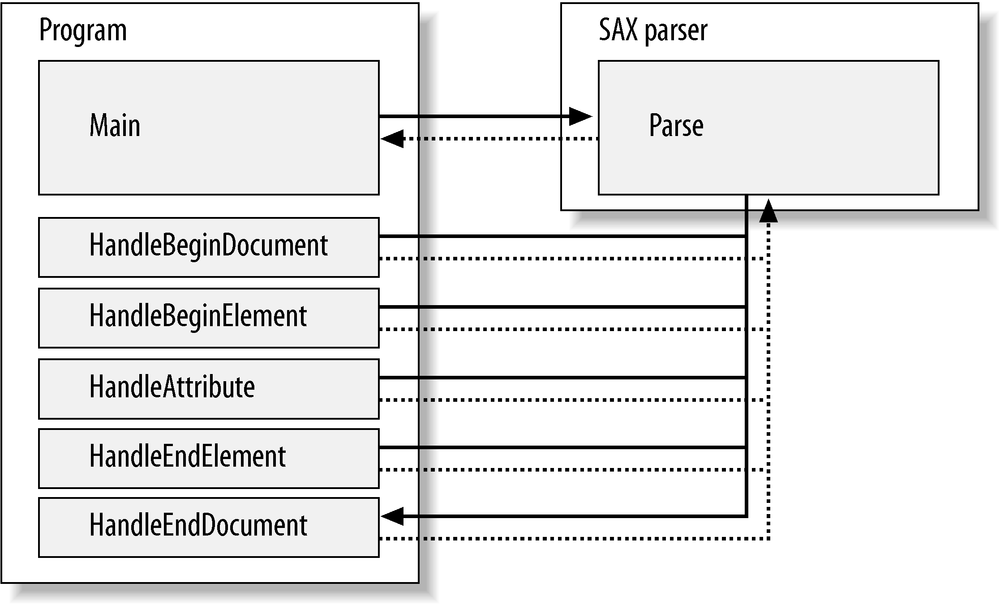Pull Parser Versus Push Parser
In many ways, XmlReader
is analogous to the Simple API for XML (SAX). They both work by
reporting events to the client. There is one major difference between
XmlReader and a SAX parser, however. While SAX
implements a push parser model,
XmlReader is a pull parser.
Tip
SAX is a standard model for parsing XML, originally developed for the
Java language in 1997, but since then applied to many other
languages. The SAX home page is located at http://www.saxproject.org/.
In a push parser, events are pushed to you. Typically, a push parser requires you to register a callback method to handle each event. As the parser reads data, the callback method is dispatched as each appropriate event occurs. Control remains with the parser until the end of the document is reached. Since you don’t have control of the parser, you have to maintain knowledge of the parser’s state so your callback knows the context from which it has been called. For example, in order to decide on a particular action, you may need to know how deep you are in an XML tree, or be able to locate the parent of the current element. Figure 2-1 shows the flow of events in a push parser model application.

In a pull parser, your code explicitly pulls events from the parser. Running in an event loop, your code requests the next event from the parser. Because you control the ...
Get .NET & XML now with the O’Reilly learning platform.
O’Reilly members experience books, live events, courses curated by job role, and more from O’Reilly and nearly 200 top publishers.

